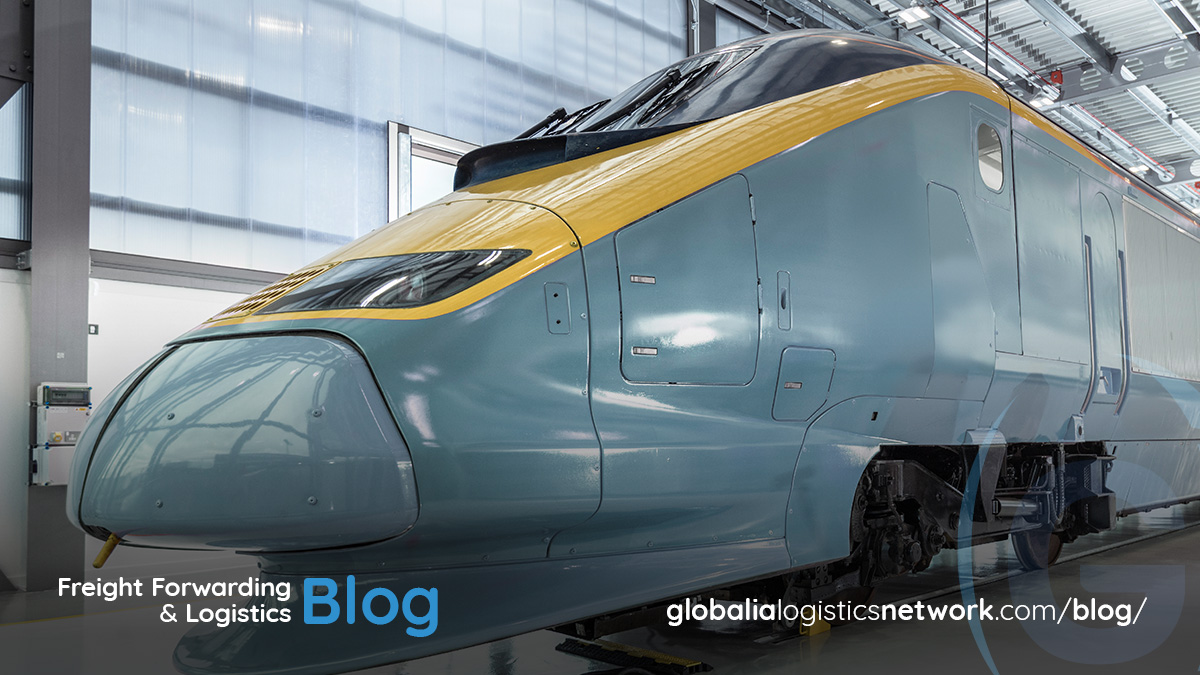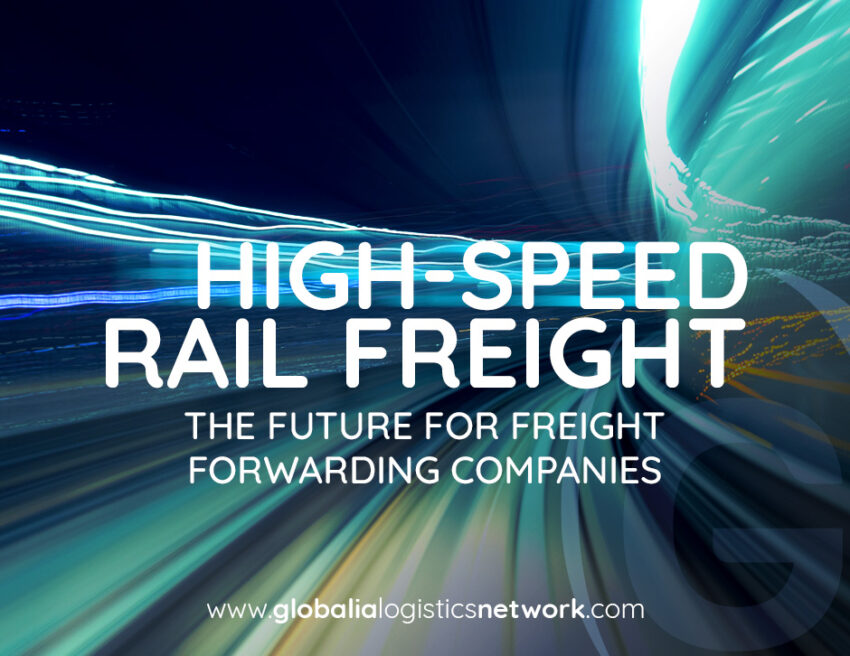Imagine a world where freight moves as fast as passenger trains, where goods can traverse continents in days instead of weeks, and where sustainability isn’t just a buzzword but a core element of the supply chain. This is not a distant dream—it’s becoming a reality, thanks to the groundbreaking advancements in high-speed rail freight led by China and Europe. High-speed rail freight is no longer a futuristic concept—it’s here, and it’s reshaping the way goods are transported across the globe. With the global supply chain under constant pressure to deliver faster, greener, and more cost-effective solutions, high-speed rail freight offers a compelling alternative to traditional air and sea freight. But what makes China and Europe the pioneers in this space? And how can freight forwarding companies leverage this innovation to stay ahead of the competition? Let’s dive in.

The Rise of High-Speed Rail Freight: A Game Changer for Freight Forwarding Companies
In an era where time is money, speed is everything. High-speed rail freight combines the best of both worlds: the speed of air freight and the cost-effectiveness of traditional rail. But it’s not just about speed. Sustainability is a driving force behind this shift. With increasing pressure to reduce carbon emissions, high-speed rail freight offers a greener alternative to air and road transport. For freight forwarders, this means an opportunity to meet the growing demand for eco-friendly logistics solutions while maintaining efficiency.
China and Europe are leading the charge, investing heavily in infrastructure, technology, and innovation to make high-speed rail freight a viable option for businesses. But what exactly are they doing differently, and how can you, as a freight forwarder, tap into this emerging market? What makes China and Europe the pioneers in this space? And how can freight forwarding companies capitalize on this innovation to stay ahead in the competitive logistics industry? Let’s explore.
China’s High-Speed Rail Freight Revolution
China, the world’s largest exporter, has long been a leader in rail technology. While its extensive high-speed rail network was initially built for passengers, it is now being adapted for freight. Dedicated high-speed freight trains can reach speeds of up to 350 km/h (217 mph), drastically cutting transit times. For example, a high-speed freight train can transport goods from Beijing to Shanghai—covering over 1,300 km (800 miles)—in just 10 hours. When factoring in airport delays and handling times, this is even faster than air freight.
China’s ambitions go beyond domestic freight. The Belt and Road Initiative (BRI) has expanded its rail network to Europe, creating a seamless trade corridor. In 2020, China introduced dedicated high-speed freight trains, capable of transporting goods at speeds of up to 350 km/h (217 mph). These trains are designed to handle time-sensitive shipments such as e-commerce parcels, medical supplies, and high-value electronics. Freight forwarding companies can now move cargo from China to Europe in as little as 15 days, compared to the 30-40 days required for sea freight. This development is particularly beneficial for industries dealing with time-sensitive shipments, such as e-commerce, automotive, and perishables.
The China Railway Express, often referred to as the “Silk Road on Tracks,” has further extended this model to connect China with European markets. The growing demand for quicker rail freight solutions has led to a significant increase in freight trains operating between China and Europe, reducing transit times compared to traditional rail freight services.
Advantages of China’s High-Speed Rail Freight
- Faster Delivery Times: Compared to conventional rail freight, HSR freight can cut delivery times by 30-50%, making it an attractive alternative for perishable goods and urgent shipments.
- Lower Carbon Footprint: Rail freight produces far fewer emissions than air or road transport, aligning with China’s carbon neutrality goals for 2060.
- Seamless Integration with E-commerce: China’s booming e-commerce market has fueled demand for faster deliveries, and HSR freight provides a crucial solution for domestic and cross-border shipments.
Europe’s Commitment to Sustainable Rail Freight
Europe, on the other hand, is focusing on sustainability and interoperability. The European Union’s Green Deal has set ambitious targets to reduce greenhouse gas emissions, and rail freight plays a crucial role in achieving these goals. High-speed rail freight is being integrated into the continent’s existing rail network, emphasizing cross-border connectivity and standardization.
Countries like Germany, France, and Spain are investing heavily in dedicated high-speed freight corridors. Additionally, initiatives like the European Rail Freight Corridors (RFCs) are streamlining operations across multiple countries. This means freight forwarding companies can access a more reliable, eco-friendly transport mode capable of handling a wide range of goods, from bulk commodities to high-value shipments.
High-Speed Freight Projects in Europe
The European Green Deal aims to reduce carbon emissions by 55% by 2030, making rail transport a priority. Countries like France, Germany, and Spain have begun testing dedicated high-speed freight corridors to reduce reliance on road and air transport.
One of the most ambitious projects is the Euro Carex initiative, which seeks to introduce high-speed freight trains between major logistics hubs such as Paris, London, Amsterdam, Frankfurt, and Lyon. These trains, running at speeds of 250-300 km/h, are expected to offer a viable alternative to short-haul air freight.
Key Benefits of High-Speed Rail Freight in Europe
- Eco-Friendly Logistics: Rail freight emits up to 80% less CO₂ compared to trucks and aircraft, making it the preferred choice for sustainable supply chains.
- Reduced Congestion and Delays: With increasing road congestion across Europe, shifting freight to HSR helps ease traffic bottlenecks, improving efficiency.
- Competitive Costs: While HSR freight is still developing, its costs are expected to be lower than air freight, making it a cost-effective alternative for businesses.
Why Freight Forwarding Companies Should Pay Attention
High-speed rail freight offers a unique value proposition that freight forwarding companies can’t afford to ignore:
- Speed and Reliability: With transit times rivaling air freight but without the unpredictability of weather-related delays or airport congestion, high-speed rail freight ensures on-time deliveries.
- Cost-Effectiveness: While slightly more expensive than traditional rail, high-speed rail freight is significantly cheaper than air freight, making it an attractive alternative for cost-conscious clients.
- Sustainability: As businesses prioritize green logistics, high-speed rail freight provides a low-carbon transport option that aligns with sustainability goals.
- Capacity and Flexibility: High-speed freight trains can transport a diverse range of goods, from electronics to pharmaceuticals, offering flexibility for various industries.
Challenges and Opportunities in High-Speed Rail Freight
Despite its advantages, high-speed rail freight faces challenges such as infrastructure limitations, high initial costs, and regulatory hurdles. However, these challenges also present opportunities for innovation and collaboration within the industry.
Freight forwarding companies can work closely with rail operators and governments to develop customized solutions. Additionally, investments in technology such as real-time tracking and predictive analytics can enhance the efficiency and transparency of high-speed rail freight services.
The Future of Freight Forwarding Companies in High-Speed Rail Logistics
The future of logistics is fast, green, and interconnected, with high-speed rail freight playing a central role. As China and Europe continue expanding their networks, the potential for freight forwarding companies is enormous. By embracing this mode of transport, forwarders can offer clients faster, more sustainable, and cost-effective logistics solutions that cater to the evolving demands of global trade.


